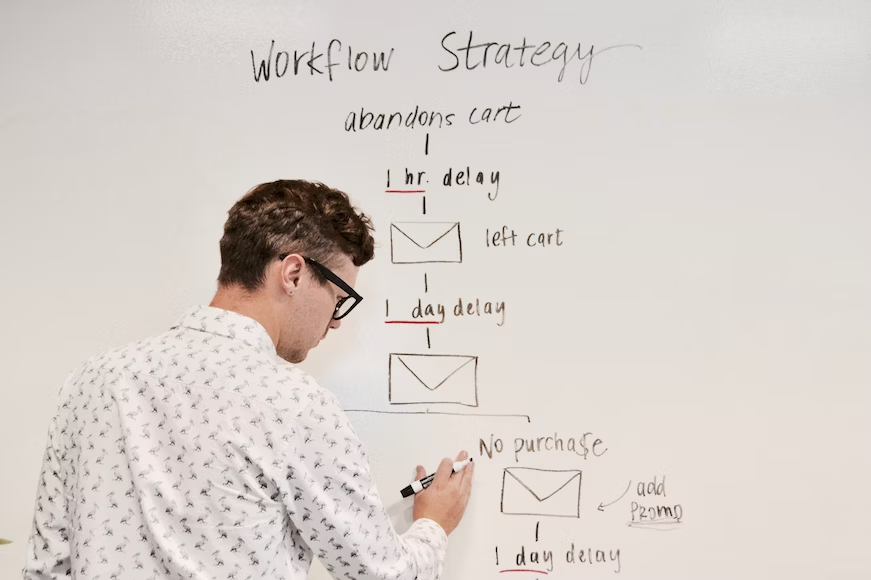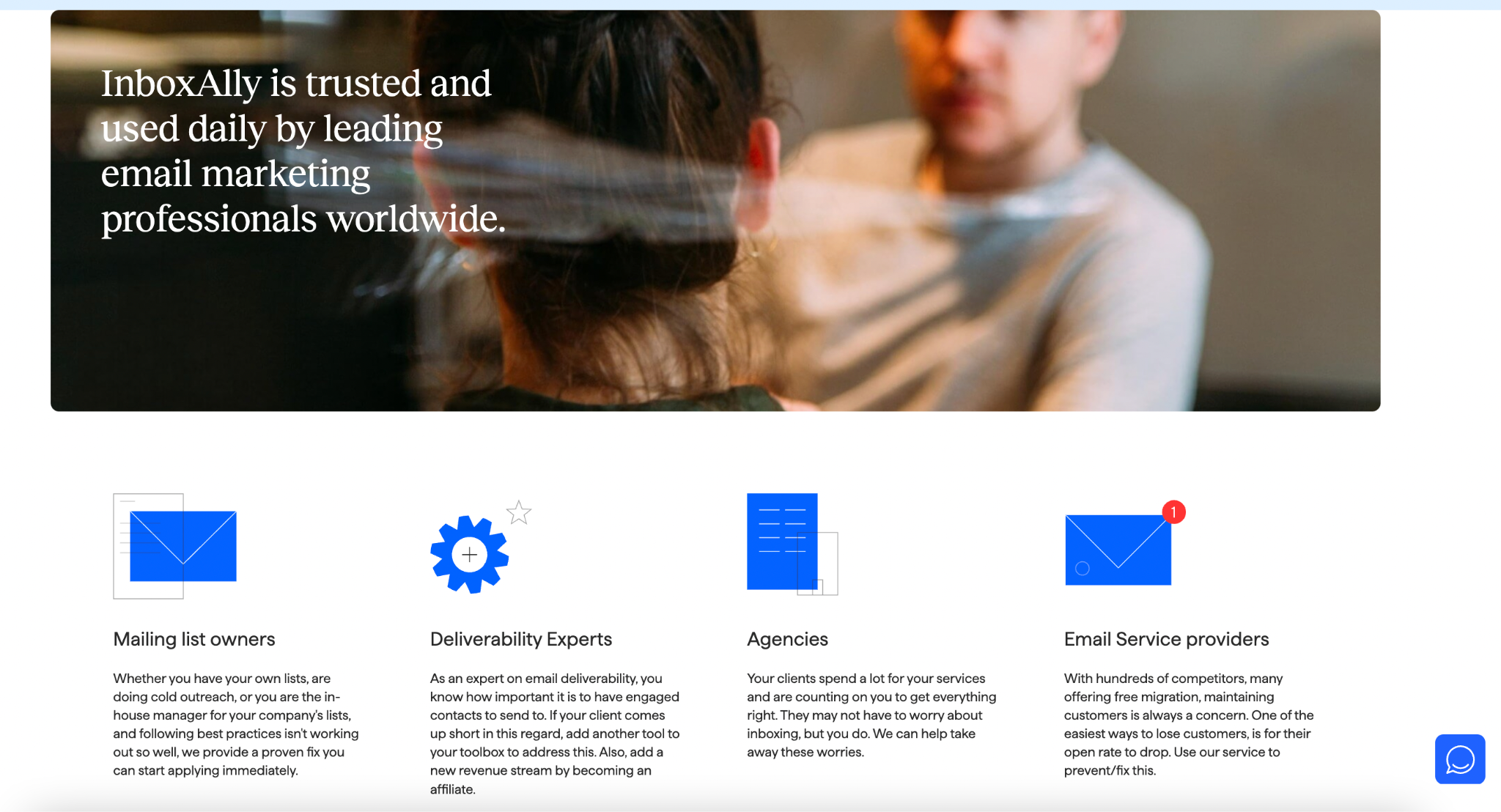In the world of sales and business development, cold emailing has become a common practice to reach potential clients. However, getting a response from these initial emails can often be challenging.
This is where follow-up emails come into play. These emails are essential in maintaining communication and increasing the chances of receiving a positive response.
We will explore effective strategies and techniques for crafting compelling follow-up emails that encourage them to engage with you.
From subject lines to follow-up email templates, we got you covered. We will provide you with all the tools and insights to boost the success of your cold email campaign.
Let’s dive in.
Why Send Follow-Ups to Cold Emails?
Based on a statistic about cold emails, the typical response rate for the first email is around 16%. However, by sending a follow-up email, the average response rate jumps to 27%. [1]
This significant increase emphasizes the importance of implementing an effective follow-up email strategy to capture the attention of your prospects.
In addition, follow-ups to cold emails are crucial for several reasons. Firstly, they provide an opportunity to remind recipients about your initial cold email. It also keeps your message fresh in their minds.
By referencing the previous email, you establish a connection and show that you value their time and attention.
Secondly, follow-ups allow you to address any potential concerns. These may have prevented the recipient from responding to your initial email. This personalized approach also demonstrates your commitment to addressing their specific pain points.
Additionally, follow-ups enable you to maintain a consistent presence in the recipient’s inbox. As a result, it increases the chances of getting noticed and receiving a response.
Ultimately, these well-crafted messages enhance your sales process, nurture relationships, and contribute to the success of your cold email campaigns.
How Long Should You Wait Before Following Up?
The ideal timeframe for following up on a cold email typically lasts three to seven business days. Waiting too long may cause your initial email to become irrelevant or forgotten. Meanwhile, following up too soon might come across as pushy or impatient.
Therefore, striking the right balance is crucial to maximize your chances. Consider factors such as the recipient’s industry, workload, and communication preferences when determining the right timing for your cold email follow-up.
Additionally, if you mentioned a specific timeframe or deadline in your initial email, it’s essential to align your follow-up accordingly.
How Many Cold Follow-Ups Should You Send?
The number of follow-up emails to send in a cold email campaign varies. However, a commonly recommended approach is a follow-up sequence consisting of three emails. This strategy allows for multiple touchpoints without being overly persistent.
The first follow-up email should be sent within a week of the initial cold email. Meanwhile, the subsequent follow-ups can be spaced out at intervals of five to seven business days.
For the first follow-up, communicate the same message as your cold email. It should serve as a gentle reminder and address any potential concerns. It also typically focuses on reiterating the value proposition
Meanwhile, the second follow-up email can emphasize a different aspect of your offer. Or you can introduce a new angle to the conversation.
Lastly, the third follow-up is often referred to as a “breakup email.” This email acknowledges the lack of response. It also offers the recipient an opportunity to opt-out or express disinterest.
This three-email sequence provides a structure for follow-ups. It also moves a conversation forward without overwhelming the recipient.
7 Steps to Writing the Perfect Cold Follow-Up Email
Source: UnSplash
1. Start with an Attention-Grabbing Subject Line
The subject line of your follow-up is the first impression you make on your recipient. Therefore, it must be attention-grabbing and compelling enough to entice them to open your email. For instance, use personalized subject lines that mention their name or reference a previous interaction. [2]
In addition, consider using a subject line that addresses a pain point or offers a specific value proposition. Experiment with different subject lines as well to see what resonates best with your audience.
2. Begin with a Friendly Greeting and Reminder
Once your recipient opens your email, begin with a friendly greeting to establish a warm and professional tone. Address them by their first name to personalize the email further.
Remind them of your previous communication, such as the initial cold email you sent before. This reminder establishes a connection and makes your follow-up email feel more familiar.
3. Provide a Brief Recap and Value Reminder
In the body of your follow-up, briefly summarize your previous message. Summarize the key points and benefits you mentioned in your initial cold email. Remind the recipient of the value they can gain from your product or service.
In addition, emphasize how you can address their pain points and offer a solution. This value reminder reinforces why they should continue the conversation with you.
4. Include a Call to Action
Another crucial element of a follow-up is a clear and compelling call to action. It lets the recipient know what you want them to do next. [3]
Whether scheduling a quick call, arranging a meeting, or requesting more information, make it easy for them to take the desired action. Use action-oriented language and provide clear instructions on how they can respond or engage with you.
5. Add a Personalized Touch
Personalization is key to making your follow-up emails stand out. Reference specific details or conversations from your previous interaction to show that you value the relationship. Customize the email as well to align with the recipient’s industry, pain points, or interests.
This personalized touch demonstrates that you’ve taken the time to understand their needs, making them more likely to engage with your email. [4]
6. Keep it Concise
In today’s fast-paced world, people have limited time and attention spans. Therefore, keep your follow-up email concise and focused. [5]
A concise email is more likely to be read and understood. So, stick to the most essential information and benefits you can offer. Respect the recipient’s time as well by avoiding long paragraphs or unnecessary details.
7. Express Gratitude and Sign Off
End your cold email follow-up on a positive note by expressing gratitude for the recipient’s time and consideration. Let them know that you also appreciate their attention and the opportunity to connect.
Reiterate your interest in continuing the conversation. Express your willingness to provide any additional information they may need as well. Lastly, sign off with a professional and friendly closing and add any relevant links or resources.
6 Effective Cold Follow-Up Email Templates
Source: UnSplash
1. The Initial No Response Follow-Up Email Template
Subject Line: Reaching Out Again – [Company Name]
Hi [Prospect’s Name],
I hope this email finds you well. I wanted to circle back on my previous email and check if you had a chance to review it. I understand that you’re busy, but I wanted to ensure that my message didn’t get lost in the shuffle.
As mentioned, I believe our [product/service] can address the [pain point] you mentioned.
I would also love to connect with you to discuss this further and explore how we can assist you in achieving [specific goal or outcome].
Please let me know a time that works for you to schedule a quick call. I’m confident that this conversation will be valuable and provide insights into the benefits of our solution.
Looking forward to your response.
Best regards,
[Your Name]
[Your Contact Information]
2. Follow Up Email After a Product Demo
Subject Line: Thank You for the Product Demo – Next Steps?
Hi [Prospect’s Name],
I hope you enjoyed the product demo we provided earlier this week. It was a pleasure showcasing how our [product/service] can address your [specific needs and pain points].
Based on your feedback during the demo, I believe our solution has the potential to greatly benefit your company. It can [have specific benefits].
If you’re interested in taking the next steps, I can arrange a follow-up call to delve further into the details. These include the pricing, implementation timelines, and any customizations you may require.
Let’s work together to ensure seamless integration of our product/service into your existing workflows.
Please let me know your availability, and I will be more than happy to coordinate a time that suits you best.
Thank you again for your time and interest. I’m excited about the possibility of partnering with your company to achieve your goals.
Warm regards,
[Your Name]
[Your Contact Information]
3. The Free Audit Follow Up Email
Subject Line: Your Free Audit Results – Let’s Discuss the Findings
Hi [Prospect’s Name],
I hope this email finds you well. I wanted to follow up on the free audit we conducted for your [specific area or process]. I trust you found the results insightful and that they provided valuable insights into areas where improvements can be made.
Based on the audit findings, we identified several opportunities to optimize [relevant process or performance indicators]. Implementing these changes can have a positive impact on your [specific goals or outcomes].
I would also be delighted to discuss the audit results further and explore how we can work together to maximize the benefits. Let’s schedule a call to review the findings, address any questions you may have, and outline a tailored plan for improvement.
Please let me know your availability, and I will ensure a time is set aside for our conversation.
Thank you for participating in the audit, and I look forward to speaking with you soon.
Best regards,
[Your Name]
[Your Contact Information]
4. Follow-Up From a Sales Call
Subject Line: Recap of Our Call and Next Steps
Hi [Prospect’s Name],
I wanted to follow up on our recent call and briefly recap our conversation. It was a pleasure speaking with you and learning more about your [specific goals/initiatives].
Based on our discussion, I believe our [product/service] aligns perfectly with your needs.
As we discussed, our solution offers [specific benefits] and addresses your pain points related to [specific pain point]. I’m excited about the potential for us to work together and support your success.
I would also like to propose the next steps to move forward. Let’s schedule a follow-up call to address any remaining questions, discuss implementation details, and explore how we can customize our solution to best meet your requirements.
Please let me know your availability, and I’ll happily arrange the call at your convenience.
Thank you for your time, and I look forward to taking the next steps together.
Best regards,
[Your Name]
[Your Contact Information
5. Follow-Up Email After Sending a Quotation
Subject Line: Following Up on the Quotation for [Project/Service]
Hi [Prospect’s Name],
I hope this email finds you well. I am touching base regarding the quotation we sent you for [project/service] on [date].
I understand that you may need time to review and evaluate the proposal, but I wanted to ensure that you received it and address any questions or concerns you may have.
Our team has put together a comprehensive solution that caters specifically to your needs and provides significant value in terms of [specific benefits].
We are confident that our expertise and experience will enable us to deliver exceptional results for your [project/service].
I would be more than happy to schedule a call or meeting to discuss the quotation in detail, go over any specific requirements, and address any adjustments or modifications you may need.
Thank you for considering our proposal, and I look forward to the possibility of working together.
Warm regards,
[Your Name]
[Your Contact Information]
6. Follow-Up After a Meeting or Call
Subject Line: Recap of Our Meeting/Call and Next Steps
Hi [Prospect’s Name],
Thank you for taking the time to meet with me/talk on [date]. Our discussion about [topic] was incredibly insightful, and I appreciate the opportunity to learn more about your [specific goals/challenges].
Based on our conversation, I believe that our [product/service] is an ideal fit for addressing your needs and helping you overcome the [pain points] you mentioned.
To move forward, I suggest scheduling another meeting/call to delve deeper into how our solution can benefit your [business/project].
Once again, thank you for your time and for considering our [product/service]. I eagerly anticipate our next interaction.
Best regards,
[Your Name]
[Your Contact Information]
Use InboxAlly to Ensure Your Cold Follow-Up Email Lands in the Prospect’s Primary Inbox
When sending cold emails, there is a high risk of them being marked as spam or ending up in your recipients’ spam folders. That’s where InboxAlly comes in.
InboxAlly aims to improve the deliverability of emails, including cold emails, by working to enhance the sender’s reputation. [6]
InboxAlly’s seed emails train inbox providers to recognize the sender’s content as valuable through actions such as opening, reading, clicking links, and replying.
By demonstrating user engagement and value, InboxAlly increases the chances of cold emails landing in the recipient’s primary inbox.
In addition, this improves the deliverability of cold emails. It also increases the likelihood of them being seen and acted upon by the recipients.
InboxAlly’s service yields quick results. Most clients experience improved deliverability and open rates within four to 14 days (sometimes even doubling) The goal is to differentiate your emails from spam and increase engagement for better inbox placement and revenue growth.
Final Thoughts
Source: Pexels
Mastering the art of cold email follow-ups is vital for getting a response from your prospects.
By implementing strategic tactics such as well-crafted subject lines, referencing previous emails, and ensuring you’re contacting the right person, you can significantly enhance your chances of getting a response.
Persistence, personalization, and professionalism are other key factors that can make your follow-up emails stand out. These factors can also help you build a strong foundation for successful client relationships.
Remember, a well-executed follow-up strategy can turn cold leads into warm prospects. These practices ultimately lead to valuable business opportunities.
Discover InboxAlly, the ultimate deliverability tool trusted by experts and email service providers to conquer complex email delivery challenges.
Book a live demo now and unlock the secrets to successful cold email campaigns.
References:
[1] https://woodpecker.co/blog/follow-up-statistics/
[2] https://blog.hubspot.com/sales/sales-email-subject-lines-that-get-prospects-to-open-read-and-respond
[3] https://blog.klenty.com/cold-email-call-to-action/
[4] https://hunter.io/blog/personalization-examples/
[6] https://www.inboxally.com/use-cases



